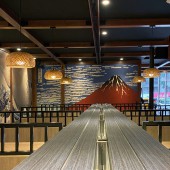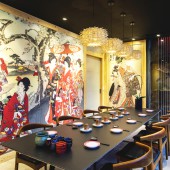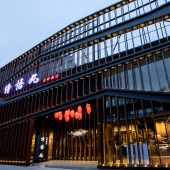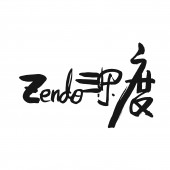Ukiyoe Restaurant by Fabio Su |
Home > Winners > #109109 |
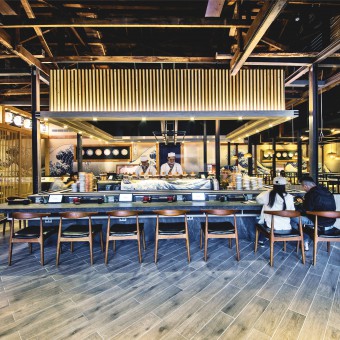 |
|
||||
| DESIGN DETAILS | |||||
| DESIGN NAME: Ukiyoe PRIMARY FUNCTION: Restaurant INSPIRATION: This project is located in Chiayi City, Taiwan. It is a Japanese style conveyor belt sushi restaurant. We preserve the original Japanese architecture and integrate it with local elements and Japanese style dining culture to make a dining space that is full of story. With the main concept of "local, sustainable and eco-friendly", we draws on the local most famous Alishan mountain landscape and the characteristics of the forestry settlement, while blending into the essence of Japanese dining culture. UNIQUE PROPERTIES / PROJECT DESCRIPTION: To reflect the local culture and natural landscape, the exterior of the building uses a wood grain aluminum louvers to outline the shape of Alishan mountain, while the interior part retains the building during the Japanese occupation period and plenty of materials. To emphasize the cultural background of conveyor belt sushi, Japanese cuisine and the deliciousness of the ingredients, the most representative "Ukiyo-e" wallpaper is stretched along the space, reappearing bustling scene of Edo period. OPERATION / FLOW / INTERACTION: With the concept of "handling complexity by simplicity," the restaurant interprets sustainability through reinforcement methods to stabilize the structure. The exterior draws the local natural landscape, exploring the harmony between human and nature, and the Japanese "shaded" aesthetic. As Japanese Ukiyo-e "the Kanagawa Surfing" throughout the interior, it reflects the Japanese cuisine background and presents a fresh dining experience. PROJECT DURATION AND LOCATION: The project design started in June 2018, completed in December 25, 2019 in Chiayi City, Taiwan FITS BEST INTO CATEGORY: Interior Space and Exhibition Design |
PRODUCTION / REALIZATION TECHNOLOGY: Cypress wood, granite skin, night pearl antique surface, incense fir, H-shaped steel, wood grain aluminum grille, Ukiyo-e output map, wood grain brick, rust plate, cola stone SPECIFICATIONS / TECHNICAL PROPERTIES: The 297 square-meters space is divided with a semitransparent material with wooden louvers and different lanterns to create an open visual. Unprocessed cypress wood and rustic iron are used to reduce the environmental impact. Subverting the tradition, the design team adopts double tracks to meet the diverse needs, and by narrowing the distance between the chefs and guests at Itabasahi area, giving a rich and cozy experience for them. TAGS: Restaurant, Japanese, Taiwan, Integration, Conveyor belt sushi, Local, Sustainable, Environmentally friendly RESEARCH ABSTRACT: How to regenerate existing an abandoned old building and inject fashion elements into it with both functionality and traditional style. Make the work conform to the main spirit of its brand, for the research purpose of this case. CHALLENGE: The original site was an abandoned old building, lacking of bearing capacity, we retains the main body of the building and uses reinforcement methods. Local beams and columns are fixed with irons while the entire structure becomes stronger by using H-shaped steel. All the pipelines are reconfigured, breaking away the conventional Japanese-style architecture and successfully bringing out the unique features. ADDED DATE: 2020-08-20 10:08:05 TEAM MEMBERS (5) : SU,CHIUNG-HSU: Architect / Designer, SU,CHIUNG-HSU: Creative Director, CHIOU,YU-JR: Designer , WEI TSUNG-JU: Designer Assistant and IMAGE CREDITS: Image#1:Photographer Jian Ren-Yi, zendo, 2020. Image#2:Photographer Jian Ren-Yi, zendo, 2020. Image#3:Photographer Jian Ren-Yi, zendo, 2020. Image#4:Photographer Jian Ren-Yi, zendo, 2020. Image#5:Photographer Jian Ren-Yi, zendo, 2020. |
||||
| Visit the following page to learn more: http://zendo999.weebly.com/ | |||||
| AWARD DETAILS | |
 |
Ukiyoe Restaurant by Fabio Su is Winner in Interior Space and Exhibition Design Category, 2020 - 2021.· Read the interview with designer Fabio Su for design Ukiyoe here.· Press Members: Login or Register to request an exclusive interview with Fabio Su. · Click here to register inorder to view the profile and other works by Fabio Su. |
| SOCIAL |
| + Add to Likes / Favorites | Send to My Email | Comment | Testimonials | View Press-Release | Press Kit | Translations |
| COMMENTS | ||||||||||||||||||||
|
||||||||||||||||||||
Did you like Fabio Su's Interior Design?
You will most likely enjoy other award winning interior design as well.
Click here to view more Award Winning Interior Design.


